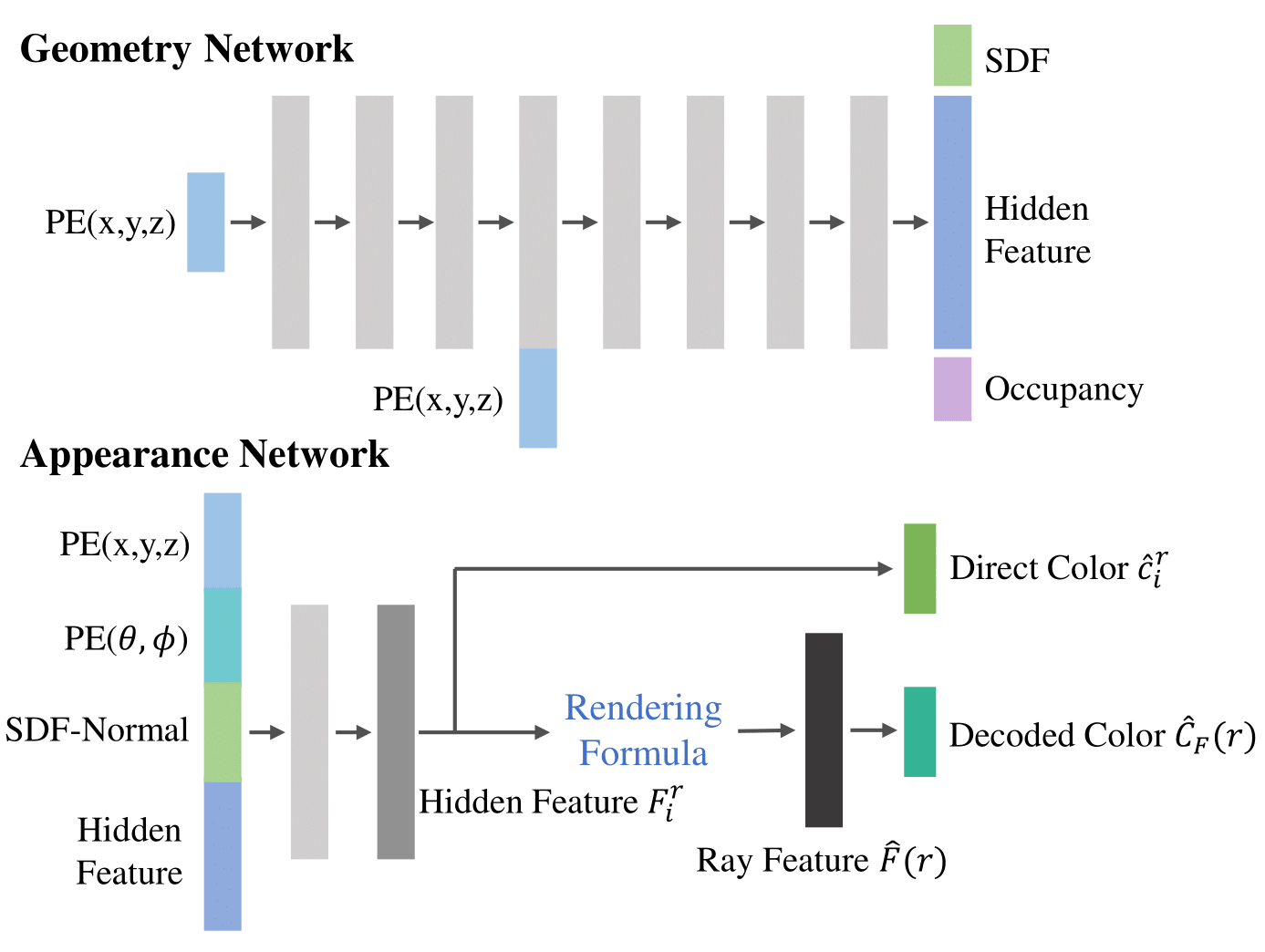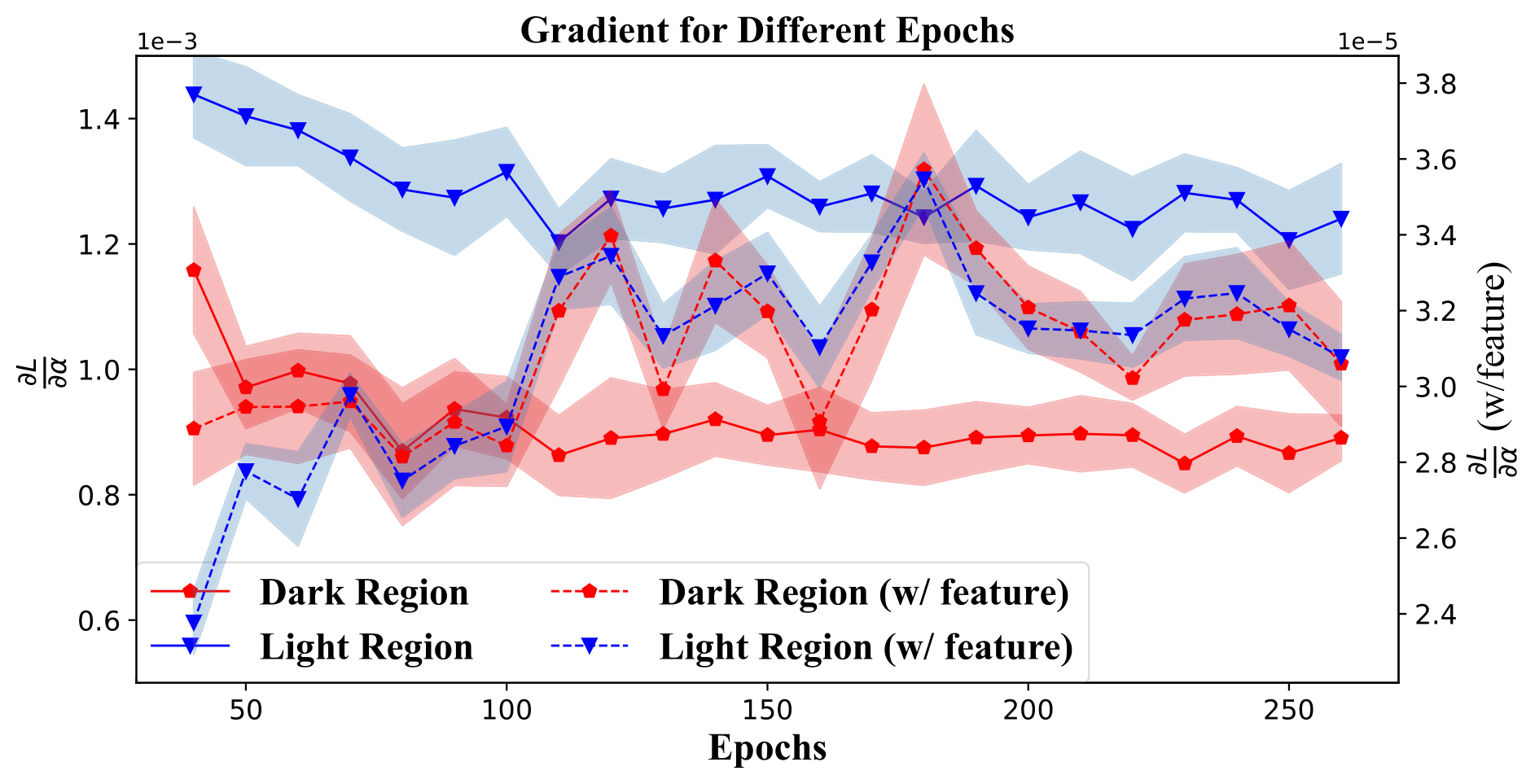Method
Feature Rendering
We find that the well-adopted color-based rendering formula in MonoSDF and NeuRIS will induce optimization bias against low-intensity areas, leaving these areas under-optimized and resulting in missing reconstructions. Accordingly, we propose a simple yet effective feature-based rendering formula to address the problem. More details can be found in the main paper.

Network Structure.

The trend for the gradient during optimization.
Occ-SDF Hybrid Representation
The left part of (a), where we stand in front of the yellow cylinder to observe the entire scene, is a widespread scenario for room-level scale scenes. Unlike the single object scenario, where the distribution of SDF value is a monotonic decreasing function from the observed position to the object, the room-level scenario has complex distributions with multi peaks/valleys along the single ray (c). Following the Laplace density function, the density distributions of different situations are shown in (d), where room-level scenes have a secondary peak near small objects but the single object scene only has one peak. It is because of the existence of this peak, the weights in the room-level scene (e) exhibit a multi-model distribution, while for the single object case a uni-modal distribution. As such, we note that the rendering depth D̂ deviates from the ground truth in the room-level scene but is close to the ground truth depth object-level scene. (b) means the effect of supervised signal in three different representations. More details can be found in the main paper.

Results
Ballroom
Museum
Scene 0050
Scene 0084
Scene 0580
Scene 0616
Related Links
There's a lot of excellent work trying to generate better reconstruction results.
You can also check them.
Coordinate Quantized Neural Implicit Representations for Multi-view Reconstruction.
I2-SDF: ntrinsic Indoor Scene Reconstruction and Editing via Raytracing in Neural SDFs